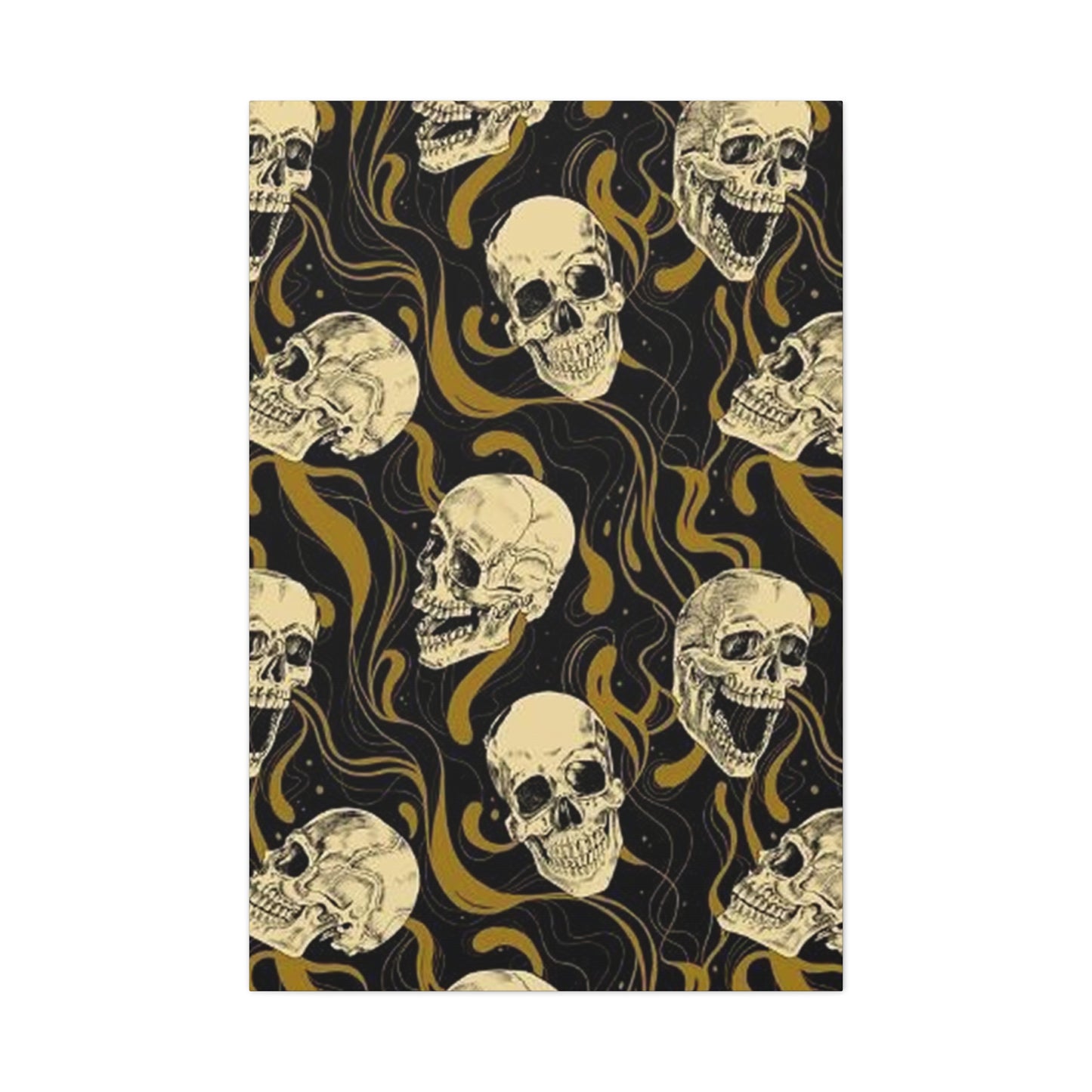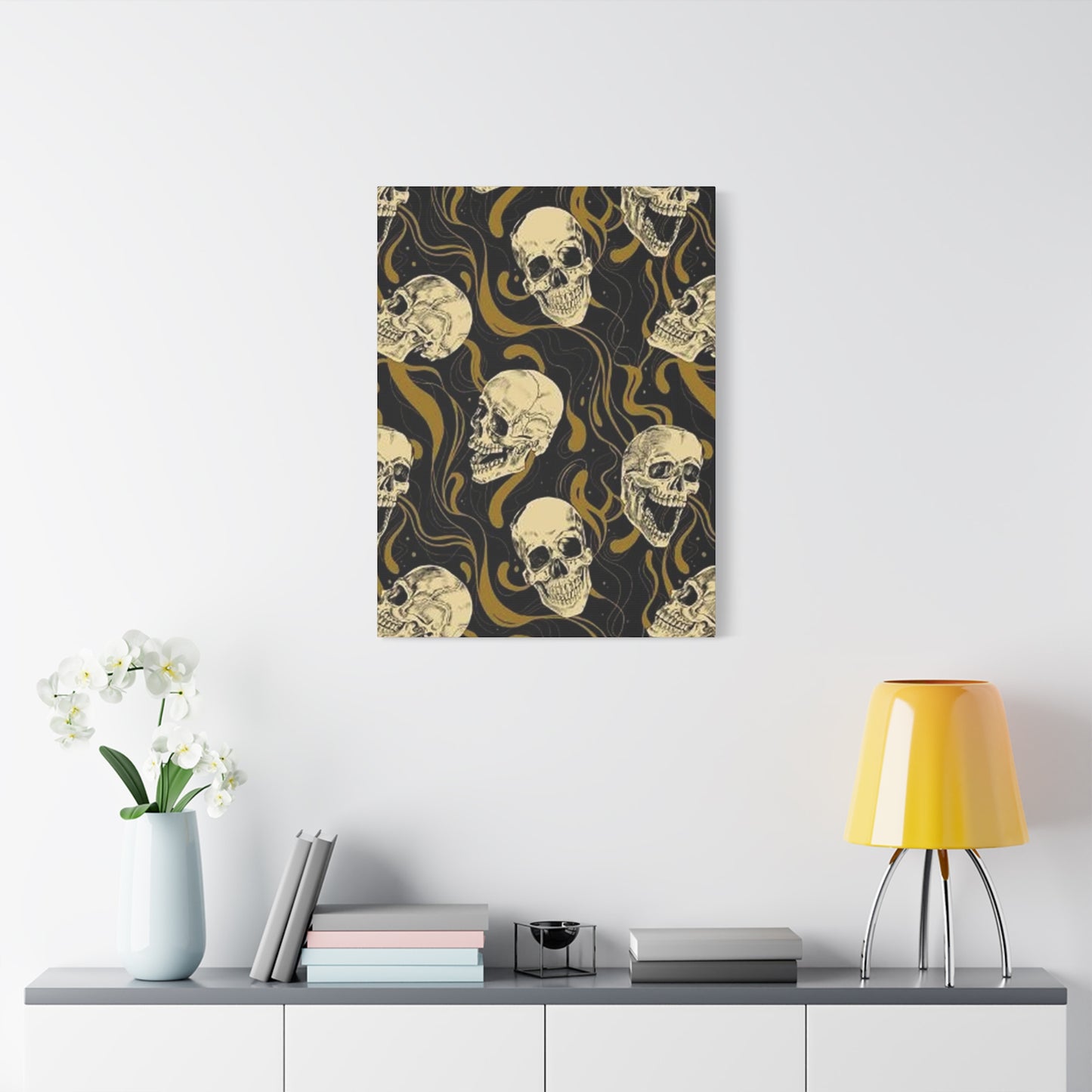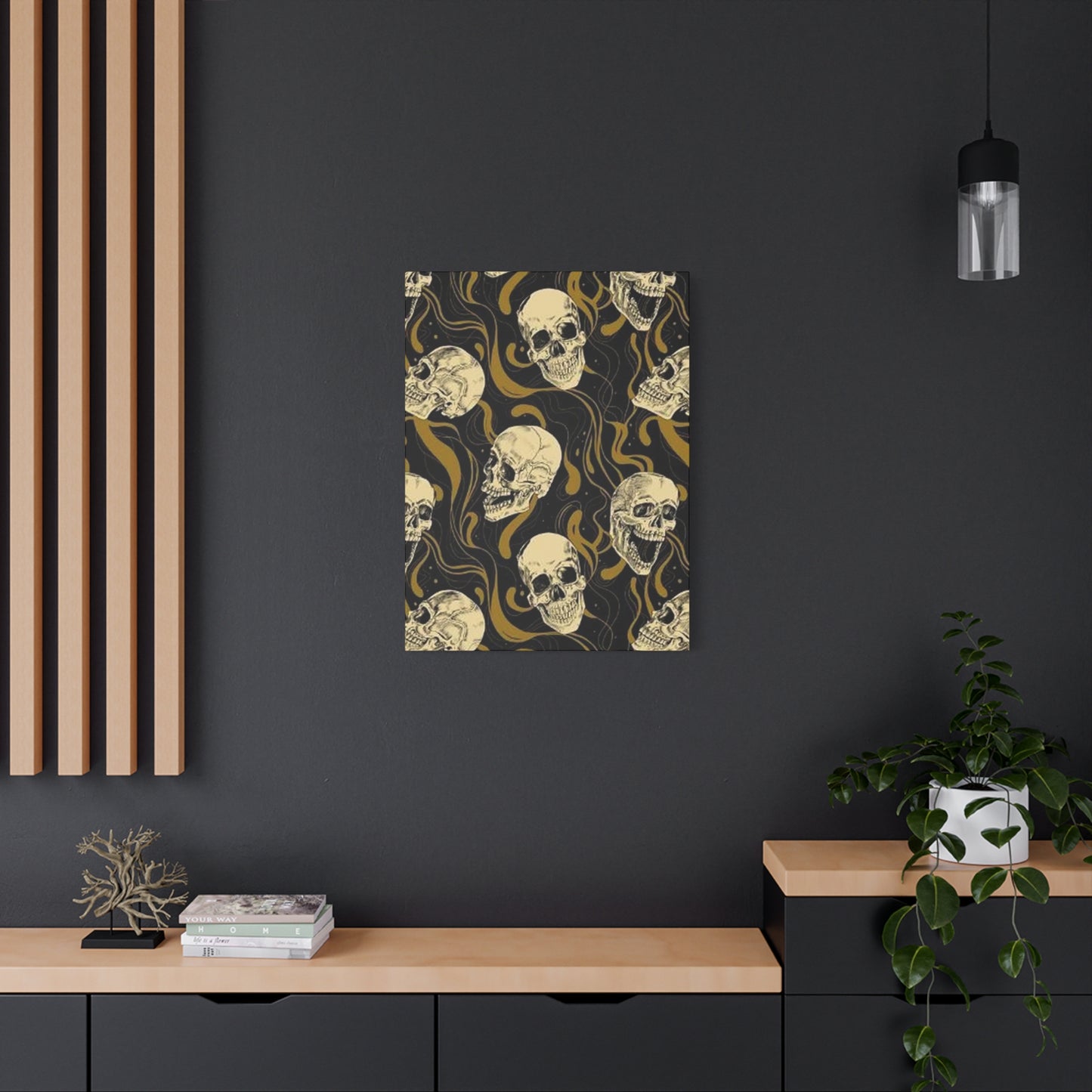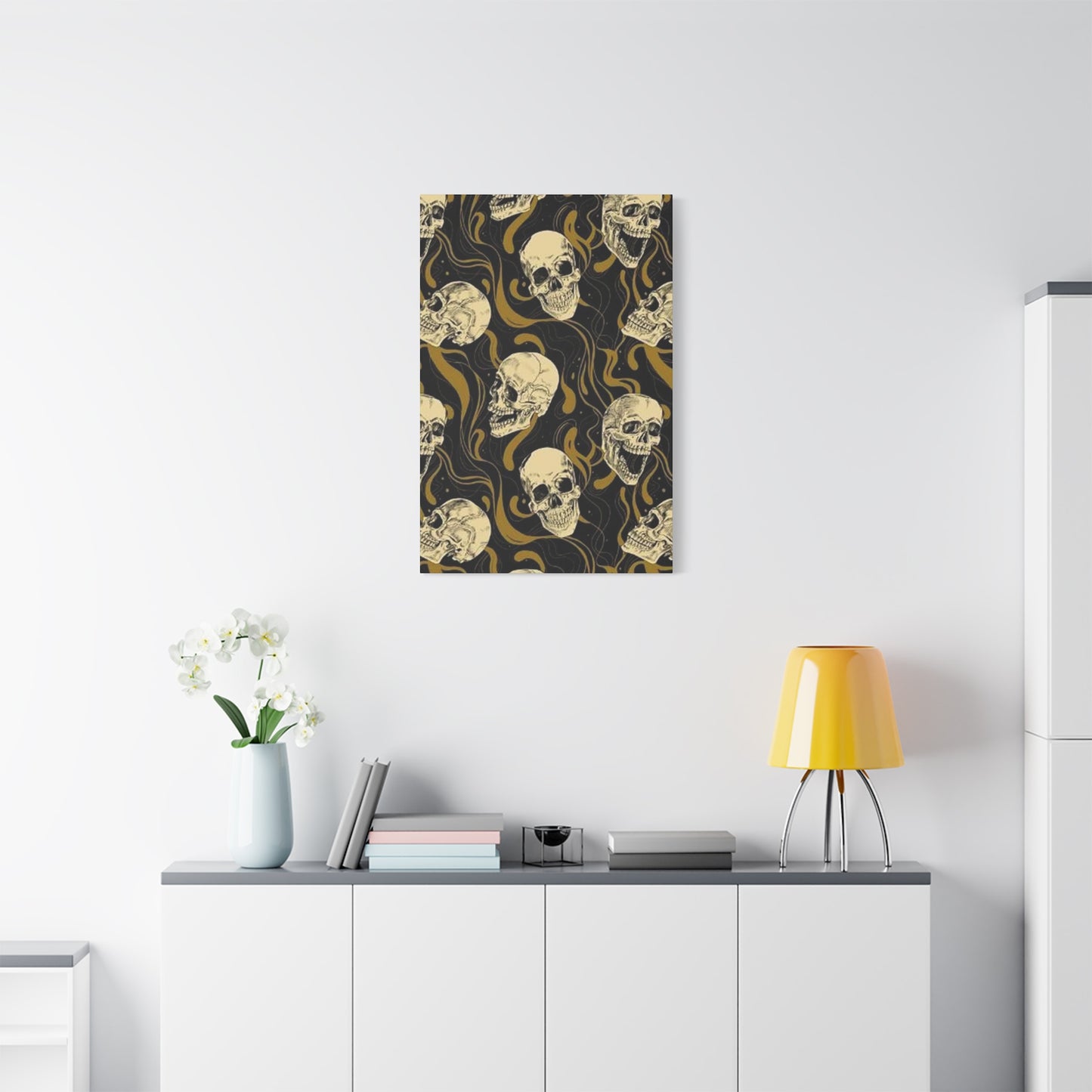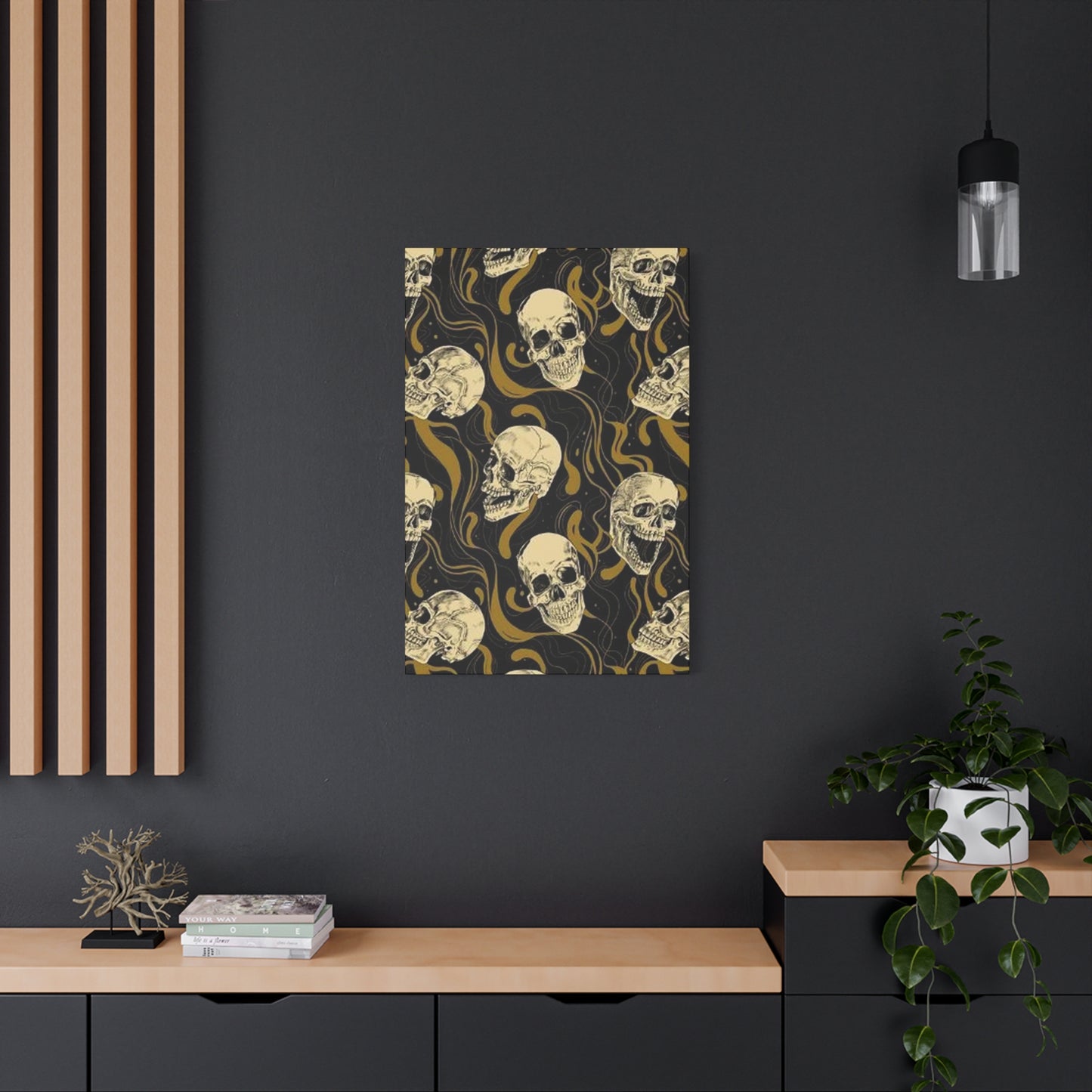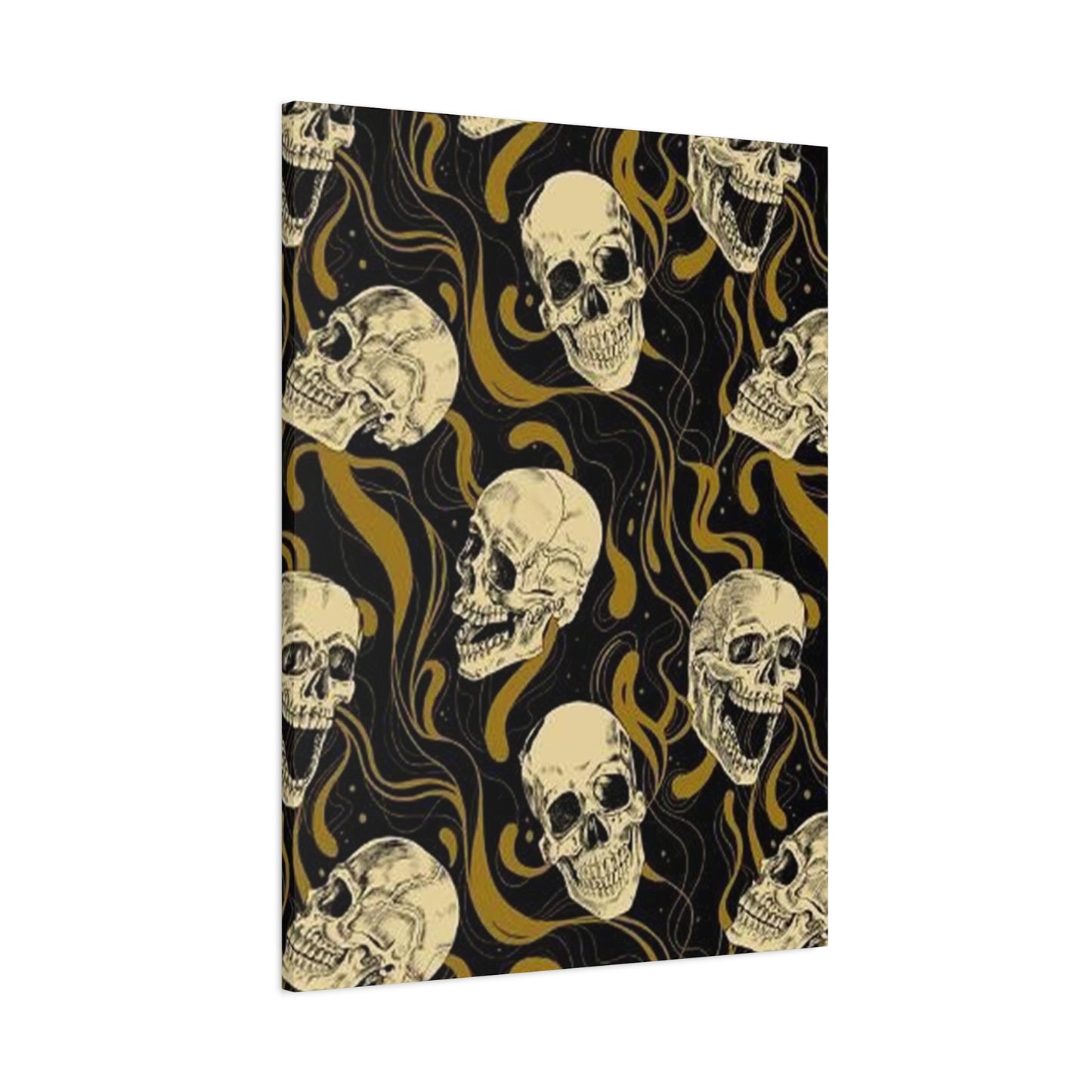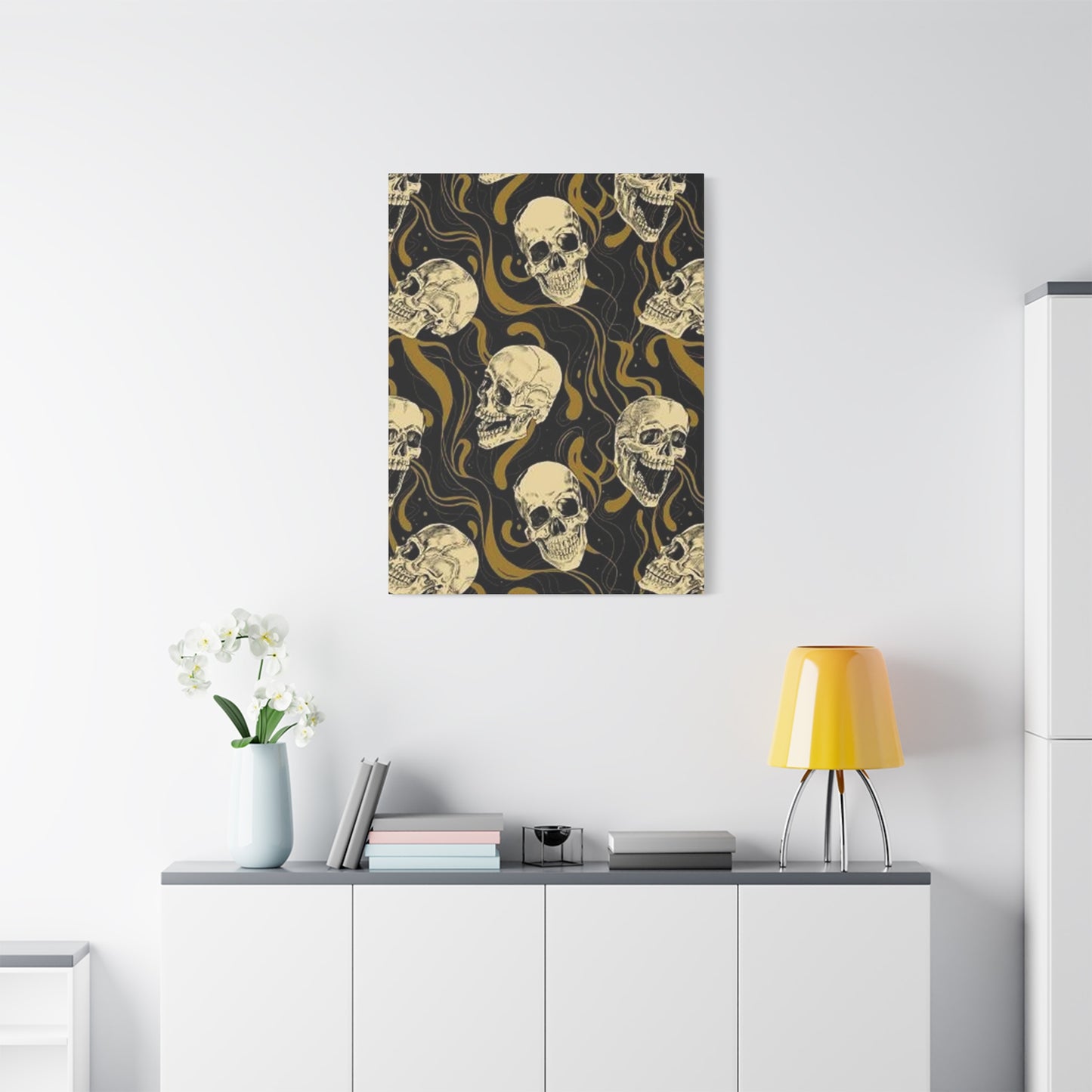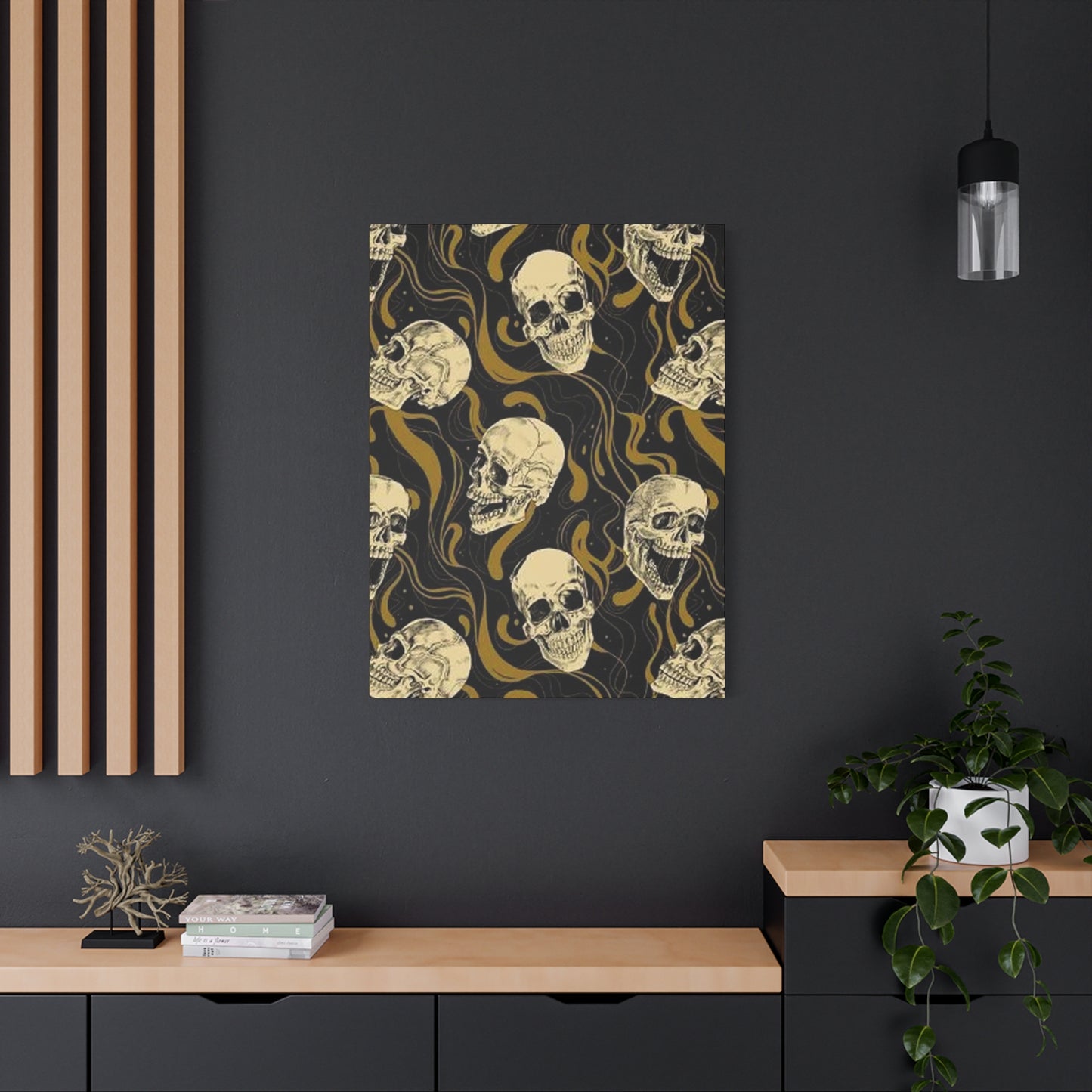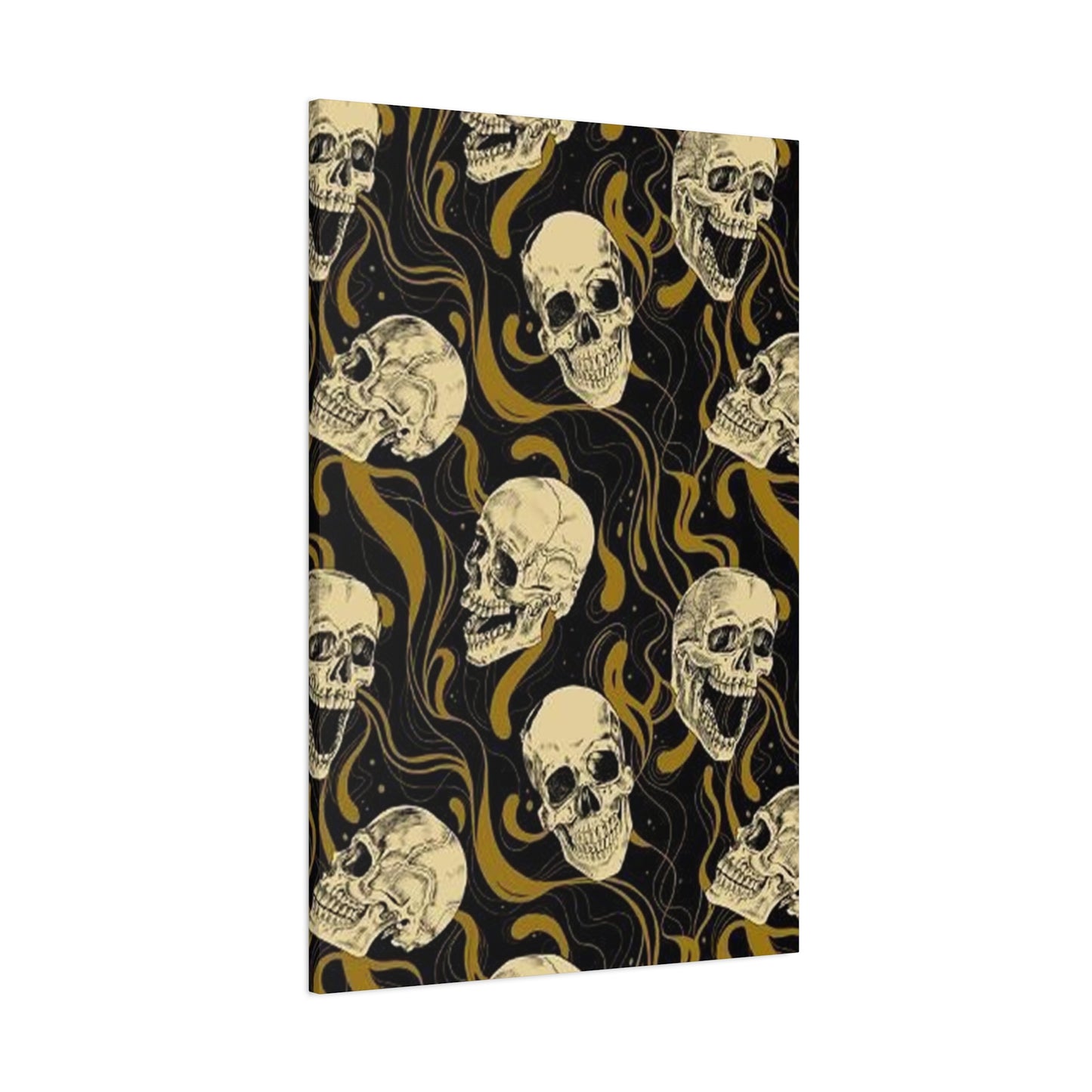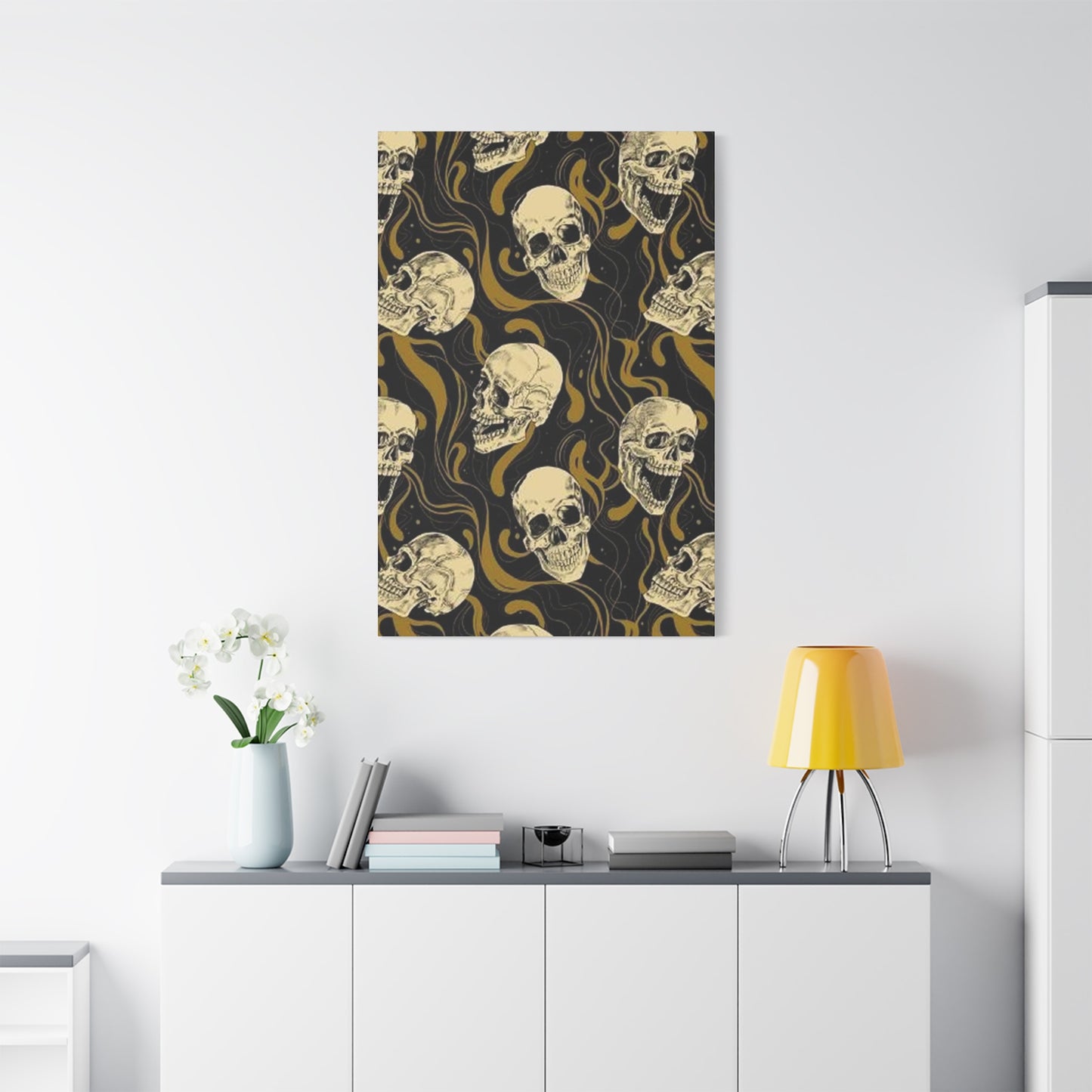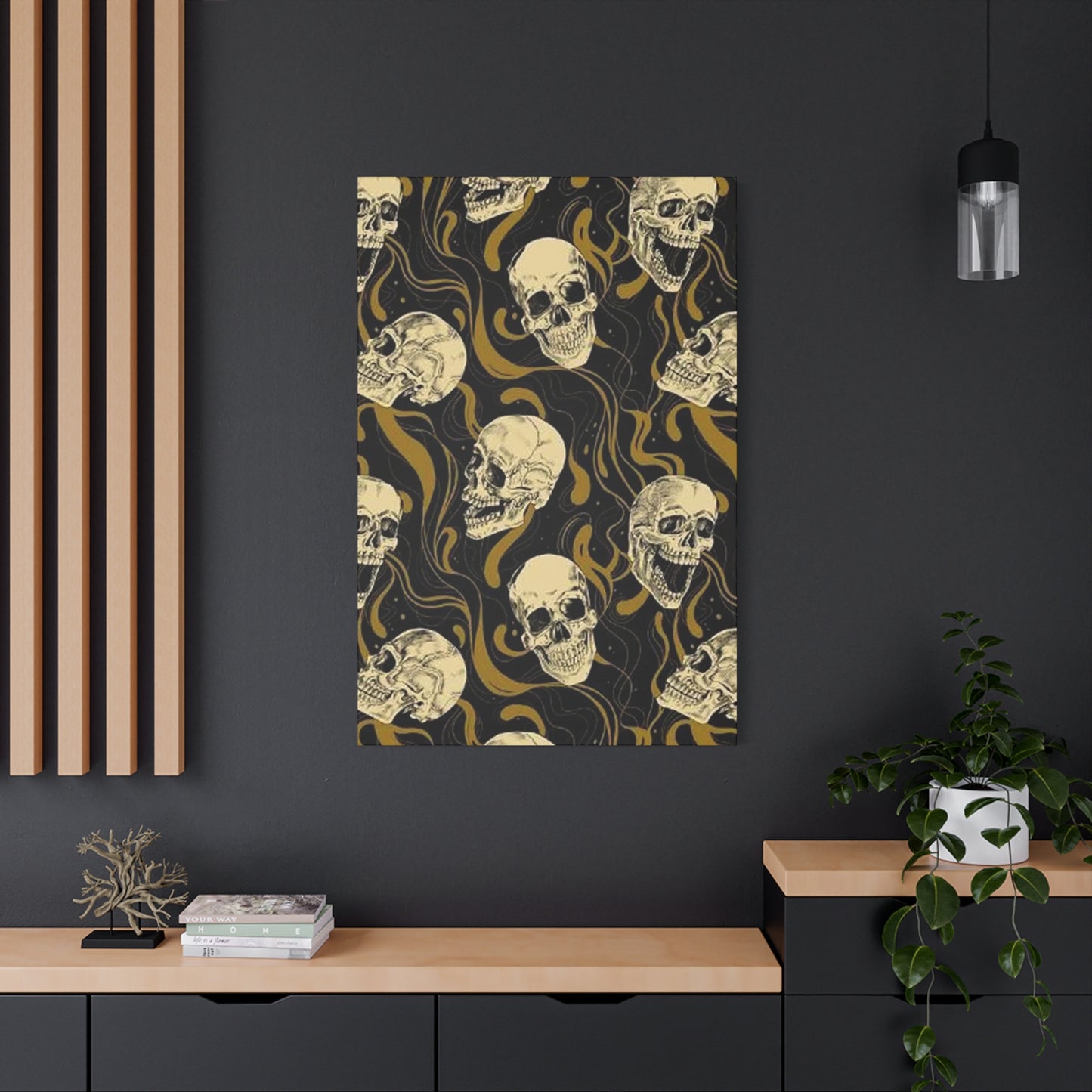Laughing Skulls Wall Art: Bold Designs for Fearless Interiors
There exists a fascinating intersection where mortality meets mirth, where the macabre dances with comedy, and where skeletal grins become symbols of defiance rather than doom. This peculiar artistic territory belongs to laughing skulls wall art, a decorative genre that has captured the imagination of those who refuse to take life or death too seriously. These pieces transform traditional skull imagery from something purely sinister into something refreshingly irreverent, creating visual statements that challenge conventional decorating wisdom while bringing unexpected personality into living spaces.
The artistic representation of skulls laughing creates an immediate paradox that draws the eye and stimulates conversation. Unlike traditional memento mori imagery designed to remind viewers of mortality's inevitability, these grinning craniums seem to mock death itself, suggesting that perhaps the final joke is on our fears rather than on our existence. This subversive quality makes them perfect for individuals who appreciate art that provokes thought while simultaneously entertaining, who want their walls to reflect not just aesthetic preferences but philosophical stances about existence, humor, and the absurdity of taking anything too seriously.
Modern interior design increasingly embraces pieces that tell stories and reveal personality rather than simply filling empty wall space with inoffensive neutrality. Laughing skulls wall art serves this purpose magnificently, instantly communicating that the inhabitant of a space values originality, possesses a sophisticated sense of humor, and isn't afraid to embrace imagery that others might find too bold or unconventional. These pieces function as visual manifestations of confidence, declaring that the home belongs to someone who makes their own rules about what constitutes appropriate decoration.
The popularity of skull imagery across cultures and throughout history provides a rich foundation for contemporary interpretations. From Mexican Dia de los Muertos celebrations that honor death with colorful festivity to medieval European danse macabre traditions that used skeletal figures to comment on mortality's democratic nature, humans have long recognized that skulls can carry meanings far beyond simple morbidity. Laughing skulls wall art taps into this extensive cultural history while adding distinctly modern sensibilities about irony, rebellion, and the power of humor to transform even death itself into something we can face with a smile.
Add Edge with Laughing Skulls Wall Art
Introducing laughing skulls wall art into your living environment immediately shifts the atmospheric energy from conventional to extraordinary. These pieces act as visual disruptors, challenging the safe predictability that characterizes so many residential and commercial spaces. When visitors encounter a laughing skull prominently displayed, they experience a moment of delightful cognitive dissonance where expectations collide with reality, creating memorable impressions that generic landscape paintings or abstract color fields could never achieve.
The edge that laughing skulls bring isn't about shock value for its own sake but rather about authenticity and the courage to display imagery that reflects genuine personality rather than magazine-perfect conformity. In an era where social media has homogenized many aspects of home decoration, with countless spaces looking virtually identical thanks to the same mass-market sources and trending styles, laughing skulls offer a pathway toward genuine distinctiveness. They signal that the space belongs to someone who thinks independently about aesthetics and isn't constrained by conventional notions of what should or shouldn't hang on walls.
Positioning these pieces strategically throughout your environment creates focal points that naturally draw attention and anchor entire rooms around their bold presence. A large laughing skull canvas above a sofa transforms an ordinary seating area into a statement zone where conversations naturally flow toward topics beyond weather and work. In home offices, these pieces can serve as daily reminders not to take professional pressures too seriously, offering visual permission to maintain perspective and humor even during challenging work situations. Entryways featuring laughing skulls immediately establish the character of the entire home, preparing guests for a space where creativity and individuality take precedence over conventional expectations.
The textural and dimensional qualities of different laughing skulls wall art formats contribute significantly to the edge they provide. Canvas prints stretched over substantial frames create physical presence that extends into the room's three-dimensional space, while metal prints offer industrial coolness that reflects light in ways that change throughout the day as natural illumination shifts. Framed posters behind glass add formal structure that can ironically contrast with the irreverent subject matter, creating additional layers of visual interest through this deliberate juxtaposition of presentation style and content.
Color choices in laughing skulls wall art dramatically influence the specific type of edge each piece brings to your environment. Monochromatic black and white designs deliver classic boldness with timeless appeal that never feels dated, their high contrast creating drama that works equally well in minimalist modern spaces and more eclectic environments. Vibrant multicolor versions inject energetic playfulness that can enliven neutral rooms or complement existing bold color schemes. Metallic accents in gold, silver, or copper add unexpected sophistication that elevates skulls from purely rebellious imagery into something more refined and gallery-worthy.
Scale considerations play crucial roles in how effectively laughing skulls add edge to your spaces. Oversized pieces measuring four feet or larger make undeniable statements that dominate entire walls, perfect for loft-style spaces with high ceilings and expansive wall surfaces that can accommodate such bold gestures. Medium-sized pieces work beautifully in standard residential rooms, providing substantial visual interest without overwhelming more modest proportions. Collections of smaller laughing skull prints arranged in intentional groupings create dynamic gallery walls where the cumulative effect generates impact that individual pieces alone couldn't achieve.
Why Laughing Skulls Make Bold Statements
The inherent boldness of laughing skulls stems from their deliberate embrace of imagery that conventional wisdom suggests we should avoid or at least treat with somber reverence. Death and mortality represent topics that polite society typically relegates to hushed conversations and serious contexts, making the decision to feature skulls laughing hysterically a form of visual rebellion against these unstated but powerful social norms. This transgressive quality ensures that laughing skulls never fade into background wallpaper but instead maintain their capacity to surprise and engage viewers no matter how familiar they become with the pieces.
Cultural taboos surrounding death imagery vary globally, but in many Western contexts, skulls carry associations with danger, poison, piracy, and mortality that make them inherently attention-grabbing symbols. Laughing skulls subvert these traditional meanings by adding the incongruous element of joy and humor, creating cognitive dissonance that forces viewers to reconcile seemingly contradictory concepts. This mental work required to process the imagery ensures that these pieces remain actively engaging rather than passively decorative, continuing to reward attention and contemplation long after initial installation.
The boldness of laughing skulls also connects to broader cultural movements celebrating alternative aesthetics, from gothic and punk subcultures to contemporary street art and tattoo culture. These artistic communities have long recognized that skull imagery can represent not just death but also transformation, authenticity, and resistance to conformity. By bringing laughing skulls into residential and commercial spaces, art collectors align themselves with these creative movements while adapting their visual language for interior design contexts. This cultural positioning adds layers of meaning that extend far beyond simple decoration into statements about identity, values, and cultural affiliations.
Psychological research into visual attention reveals that humans naturally focus on faces, particularly those displaying strong emotions. Laughing skulls exploit this hardwired tendency by presenting faces frozen in eternal mirth, ensuring that eyes naturally gravitate toward these pieces even in rooms filled with competing visual elements. The exaggerated features typical of skull anatomy, especially the prominent teeth fully visible in laughing expressions, create high-contrast patterns that our visual systems process as particularly salient and worthy of attention. This biological basis for their impact means their boldness operates on instinctual levels before conscious aesthetic judgment even begins.
The conversation-starting capacity of laughing skulls makes them particularly bold choices for social spaces where interaction and engagement are desired. Unlike neutral decorative choices that blend into backgrounds without prompting discussion, laughing skulls virtually guarantee that visitors will comment, ask questions, or share their reactions. These interactions can reveal much about guests' personalities, sense of humor, and comfort with unconventional imagery, making the art functional as a social tool beyond its purely decorative role. For those who enjoy hosting and value meaningful conversations, this quality alone justifies the bold choice to feature such distinctive pieces.
Commercial applications of laughing skulls wall art demonstrate their boldness in business contexts where standing out from competitors is essential for success. Restaurants, bars, tattoo studios, barbershops, clothing boutiques, and other businesses catering to audiences that value authenticity and edge use laughing skulls to instantly communicate their brand personality. These pieces signal to potential customers that the establishment doesn't cater to conventional tastes, effectively pre-selecting clientele who appreciate the same irreverent aesthetics. This filtering function makes bold imagery not just decoration but strategic business communication.
Dark Humor Meets Art: Laughing Skulls Prints
The marriage of dark humor and visual art in laughing skulls prints creates a unique aesthetic category that appeals to those whose sense of comedy includes appreciation for life's absurdities and contradictions. Dark humor operates by finding levity in subjects typically considered serious or taboo, using comedy to process difficult realities rather than denying their existence. Laughing skulls embody this approach perfectly, acknowledging mortality's inevitability while refusing to treat it with only solemnity and fear. This balanced perspective resonates deeply with individuals who've learned that humor can be a survival tool as much as entertainment.
The artistic execution of laughing skulls determines whether they succeed as sophisticated dark humor or descend into mere crudeness. Skilled artists rendering these subjects understand that the humor emerges from juxtaposition and incongruity rather than explicit gore or shock tactics. The best laughing skull prints feature technically accomplished illustration or graphic design that would be impressive regardless of subject matter, with the skull theme adding conceptual depth rather than serving as excuse for lesser artistic standards. This quality ensures that pieces function as legitimate art worthy of serious consideration rather than novelty items with limited appeal.
Print formats for laughing skulls offer diverse options suited to different aesthetic preferences and display contexts. Traditional paper prints on high-quality stock deliver classic fine art presentation that emphasizes the artistic lineage of skull imagery in art history. Canvas prints provide textural richness and contemporary gallery appeal that works particularly well for larger pieces intended as room focal points. Metal prints offer industrial edge and remarkable durability perfect for high-traffic commercial spaces or homes with active lifestyles. Acrylic prints deliver luminous depth and modern sophistication that elevates laughing skulls into truly premium artistic territory.
The graphic design elements in many laughing skulls prints reflect influences from tattoo art, poster design, street art, and illustration traditions that have flourished outside traditional fine art contexts. Bold outlines, solid color fills, strategic negative space, and strong compositional structures characterize these design approaches, creating images that read clearly even from distances and work effectively at scales from small to monumental. This graphic clarity ensures that laughing skulls prints maintain their impact whether viewed in intimate room settings or larger commercial environments where visibility from various distances matters.
Typography and text elements integrated into some laughing skulls prints add additional layers of meaning and humor through carefully chosen phrases or single impactful words. Statements like memento vivere (remember to live), carpe diem variations, or original humorous phrases complement the visual imagery while making the pieces' philosophical stances even more explicit. The font choices, placement, and integration of these textual elements with the skull imagery itself require careful design consideration to ensure cohesive compositions rather than disjointed combinations of separate elements competing for attention.
Laughing Skulls for Alternative Home Décor
Alternative home décor rejects mainstream design conventions in favor of personal expression, unconventional combinations, and imagery that reflects authentic interests rather than prescribed good taste. Laughing skulls epitomize this approach, offering decoration that clearly signals the inhabitant's willingness to embrace aesthetics outside safe middle-ground choices. This alternative positioning doesn't mean these pieces work only in stereotypically edgy environments but rather that they bring alternative energy into any space they inhabit, creating visual friction that keeps interiors interesting and dynamic.
The subcultural associations of skull imagery connect laughing skulls wall art to diverse communities including gothic, punk, metal, rockabilly, biker, tattoo, and various other alternative lifestyle groups. Each of these communities has developed distinctive visual languages over decades, and skull imagery features prominently across nearly all of them. Incorporating laughing skulls allows individuals to reference these cultural affiliations within their personal spaces, creating homes that serve as expressions of identity and community belonging rather than just shelter and storage.
Mixing laughing skulls with other alternative décor elements creates cohesive environments where each piece reinforces the overall aesthetic vision. Vintage concert posters, band memorabilia, tattoo flash art, industrial furniture, vintage medical or scientific objects, antique books, unusual collections, and handmade or repurposed items all pair naturally with laughing skulls. The key to successful alternative decorating lies in intentional curation rather than random accumulation, selecting items that genuinely resonate personally while maintaining visual relationships that create coherence despite surface-level diversity.
The DIY ethos prevalent in alternative culture extends naturally to how laughing skulls wall art can be displayed and presented. Rather than expensive custom framing, alternative approaches might use vintage frames rescued from thrift stores, industrial pipe mounting systems, simple clip frames, or even unconventional hanging methods like chains, rope, or leather straps. This approach to presentation reinforces the anti-establishment positioning while also making alternative decoration more accessible to those without unlimited budgets for professional framing and installation services.
Alternative home décor often embraces maximalist approaches that layer patterns, textures, colors, and imagery in ways that conventional design wisdom would discourage. Laughing skulls thrive in these environments, where their boldness becomes one element among many rather than a singular shock. Gallery walls mixing skulls with botanical prints, vintage photographs, abstract art, and whatever else speaks to the collector create personal museums that reward extended viewing and reveal new relationships between pieces over time. This approach transforms living spaces into genuine expressions of individual consciousness rather than showroom replications.
The affordability spectrum of laughing skulls wall art makes alternative decoration accessible across various budget levels. Print-on-demand services and independent artists selling through online platforms offer entry points at modest prices, allowing experimentation without significant financial risk. Those willing to invest more can commission custom pieces from talented artists or purchase limited edition prints that gain value over time. This range ensures that alternative decoration remains inclusive rather than becoming another luxury commodity accessible only to the wealthy.
Top Laughing Skulls Canvas Ideas
Canvas prints of laughing skulls offer particular advantages for creating impactful wall art through their substantial physical presence and textural richness. The fabric surface provides visual warmth that metal or acrylic lacks, while gallery-wrapped edges create three-dimensional objects rather than flat prints that disappear against walls. Exploring the range of laughing skulls canvas possibilities reveals options suited to every aesthetic preference and spatial requirement, from intimate studies to monumental statements.
Single oversized laughing skull canvases measuring four feet or larger create instant focal points that anchor entire rooms around their dramatic presence. These pieces work magnificently above sofas, beds, or in dining areas where substantial scale is needed to balance furniture proportions and room dimensions. The singular focus on one powerful image creates meditative quality despite the humor inherent in the subject matter, allowing the skull to function almost as portrait might in traditional spaces. Artists often use these large formats to showcase intricate details impossible to appreciate at smaller scales.
Triptych and multi-panel canvas arrangements distribute laughing skull imagery across separated but related sections, creating horizontal or vertical compositions that fill large wall expanses while maintaining visual rhythm through the divisions between panels. Three-panel works might show progressive transformations of a single skull or present three distinct but stylistically related skull portraits. Five or more panel compositions can create wraparound effects on corner walls or stretch across entire room walls, transforming the space into immersive environments where skull imagery becomes architectural rather than merely decorative.
Mixed media canvas approaches combine printed laughing skull imagery with hand-painted elements, collage materials, or three-dimensional additions that create unique pieces rather than simple reproductions. Artists might print base skull designs before adding acrylic paint accents, gold leaf highlights, embedded objects, or textural elements that make each piece genuinely one-of-a-kind. These hybrid works bridge the affordability of prints with the uniqueness and artistic value of original paintings, appealing to collectors who want something more distinctive than mass-produced reproductions without the expense of completely original paintings.
Abstract interpretations of laughing skulls on canvas push the imagery toward pure design and pattern, reducing the anatomical elements to essential geometric forms and color relationships. These pieces maintain the spirit and recognizability of skull forms while operating more as contemporary abstract art than illustration. This approach appeals to those who appreciate the conceptual associations of skull imagery but prefer the sophisticated subtlety of abstraction over more literal representation. The balance between recognition and interpretation creates pieces that reward careful viewing with continued discovery.
Photographic laughing skulls canvases transform the subject through the particular aesthetic qualities of photography, including depth of field, lighting drama, and the documentary quality inherent to the medium. Whether capturing actual decorated skulls from cultural traditions or creating composite digital works, photographic approaches offer distinctive characteristics different from illustration or painting. Black and white photography especially excels at creating moody atmospheric pieces where lighting and composition become primary subjects alongside the skulls themselves.
Bring Attitude to Your Walls with Skull Art
Attitude in interior design refers to the distinctive personality and energy that spaces project through their decorative choices, moving beyond mere functionality or basic aesthetics into true character expression. Skull art delivers attitude in concentrated doses, instantly communicating that the space belongs to someone who doesn't follow conventional rules about appropriate decoration. This attitudinal quality makes skull art particularly valuable for individuals who want their environments to actively express their perspectives rather than passively reflecting generic good taste.
The rebellious spirit intrinsic to skull imagery taps into long traditions of using forbidden or transgressive symbols to assert independence from social expectations. From motorcycle gang insignia to punk rock album covers to contemporary streetwear graphics, skulls have consistently represented refusal to conform to polite society's aesthetic standards. Bringing this iconography into residential spaces extends that rebellious energy into the most personal environments, ensuring that even homes serve as expressions of independence rather than conformity. This consistency between public persona and private space creates authenticity that purely conventional decoration cannot achieve.
Skull art's attitude operates differently depending on the specific aesthetic approach and execution quality. Highly polished, technically sophisticated skull pieces project confident coolness and intellectual edge, suggesting owners who appreciate refined execution alongside bold subject matter. Rougher, more primitive or street-art-influenced skull works convey raw authenticity and connection to underground creative communities. Humorous or cartoonish skull designs express playfulness and refusal to take life too seriously. Understanding these attitudinal differences helps in selecting skull art that authentically reflects personal disposition rather than adopting generic edginess.
Strategic placement of skull art maximizes its attitudinal impact within living spaces. Entry halls and foyers featuring skull pieces immediately establish the character of the entire home, preparing visitors for a space where conventional expectations don't apply. Living rooms with prominent skull art make clear that entertainment here involves genuine personality rather than generic hospitality. Home offices featuring skull art help maintain perspective about work pressures while projecting professional confidence in personal brand rather than corporate conformity. Bedrooms with skull art create private sanctuaries that fully embrace authentic preferences without concern for outside judgment.
The attitude that skull art brings to commercial environments serves important business functions beyond simple decoration. Retail shops using skull art attract customers who share compatible aesthetic values while naturally filtering out those who would find the merchandise or services offered disagreeable. Restaurants and bars with skull art create distinctive branded experiences that build loyal followings rather than appealing to everyone equally. Creative service businesses like tattoo studios, hair salons, design agencies, and music production facilities use skull art to communicate their creative credibility and willingness to push boundaries for clients who want extraordinary results rather than safe mediocrity.
Combining skull art with seemingly contradictory decorative elements creates unexpected attitude through juxtaposition and ironic contrast. Skulls displayed among delicate vintage china, formal antiques, feminine floral elements, or child-friendly bright colors create cognitive dissonance that forces viewers to reassess their assumptions about each component. This sophisticated approach to attitude acknowledges complexity and refuses simple categorization, much as real human personalities contain multitudes that defy easy labeling. The resulting spaces feel genuinely personal rather than designed to communicate a single-note message.
Edgy Laughing Skulls for Modern Spaces
Modern interior design emphasizes clean lines, minimal ornamentation, neutral color palettes, and careful curation of each element within a space. At first glance, laughing skulls might seem incompatible with this aesthetic, but in practice they can enhance modern spaces by providing the personality and visual interest that pure minimalism sometimes lacks. The key lies in selecting laughing skull pieces that respect modern design principles while delivering the edge that makes spaces memorable rather than sterile.
Monochromatic laughing skull art in black and white or single-color treatments aligns perfectly with modern design's color restraint while providing the graphic impact necessary to prevent minimalist spaces from feeling empty or cold. These pieces function as sophisticated focal points that demonstrate curatorial skill rather than simply filling walls with generic abstractions. The high contrast typical of monochromatic skull art creates strong visual anchors that organize space around their presence, providing structure that complements modern furniture's geometric forms.
Oversized single pieces rather than gallery wall collections suit modern aesthetics better, respecting the principles of negative space and visual breathing room that characterize contemporary design. One substantial laughing skull canvas above a streamlined sofa or floating credenza creates more modern impact than multiple smaller pieces clustered together. This restraint paradoxically makes the skull imagery more powerful by giving it room to breathe and ensuring it commands complete attention rather than competing with surrounding elements.
The materiality of laughing skull art influences how successfully it integrates into modern spaces. Metal prints with their industrial finish and reflective surfaces complement modern materials like steel, glass, and polished concrete. Acrylic prints offer similar contemporary credibility while adding dimensional depth through their layered construction. Even traditional canvases work when mounted without visible frames using gallery-wrap techniques that emphasize the artwork itself rather than decorative presentation. These material choices ensure that skull art reads as intentional sophisticated selection rather than basement poster casualty.
Color coordination between laughing skull art and existing modern palettes creates cohesion that proves the pieces belong within carefully considered design schemes. If a modern space features gray with navy accents, selecting skull art incorporating those specific colors or working in harmonious ranges integrates the pieces seamlessly. Alternatively, choosing skull art in accent colors that pop against neutral backgrounds follows modern principles of using bold color strategically rather than overwhelming spaces with chromatic chaos. This coordination demonstrates design sophistication while maintaining the edge that makes skull art compelling.
Lighting design specifically planned to showcase laughing skull art elevates these pieces to gallery-quality presentation worthy of modern spaces. Picture lights, track lighting, or recessed spots create museum-quality illumination that emphasizes the art's importance within the design scheme. This professional approach to lighting signals that skull art isn't ironic decoration but genuinely valued artwork deserving the same treatment accorded to any significant piece. The resulting presentation encourages viewing skull art as legitimate contemporary art rather than novelty items.
Black & White Laughing Skull Wall Prints
The classic combination of black and white reduces visual information to pure form, value, and composition, creating images with timeless appeal that transcends temporary color trends. Black and white laughing skull wall prints harness this aesthetic power while delivering all the edge and attitude associated with skull imagery, resulting in pieces that work equally well in contemporary settings and more traditional environments. The absence of color focuses attention on the essential elements, the skull form, the laughing expression, the interplay of light and shadow, without chromatic distraction.
High contrast black and white skull prints create dramatic impact through stark value differences, with deep blacks and bright whites meeting in sharp transitions that grab attention from across rooms. This approach emphasizes the graphic nature of skull anatomy, treating eye sockets, nasal cavities, and teeth as pure shapes rather than naturalistic features. The resulting images operate almost as logos or symbols, simplified to essential forms that communicate instantly without requiring careful study. This graphic clarity makes high-contrast pieces particularly effective in spaces where visibility from distances matters or where bold statements are desired.
Softer grayscale interpretations of laughing skulls explore the full value range between pure black and white, using subtle gradations to create dimensional form and atmospheric mood. These pieces feel more photographic or rendered, suggesting volume and three-dimensional presence that flat graphic versions lack. The softer approach appeals to those wanting skull imagery without the aggressive impact of maximum contrast, making these pieces surprisingly versatile across different interior styles. The dimensional quality also rewards close viewing, revealing details and subtle modeling that aren't apparent from distances.
Ink illustration styles in black and white laughing skull prints reference traditions of pen and ink drawing, woodcut printing, engraving, and other historical mark-making techniques. The visible marks and artistic hand present in these approaches add warmth and humanity that purely digital vector graphics sometimes lack. Crosshatching, stippling, line work variations, and other traditional techniques create texture and visual interest while maintaining black and white restrictions. These pieces appeal particularly to those who value traditional artistic skill and want work showing clear evidence of hand craftsmanship.
Negative space becomes a primary design element in black and white laughing skull compositions, with the background playing as important a role as the skull itself. Some designs place white skulls against black backgrounds for maximum drama and reverse-reading that feels particularly modern. Others use black skulls on white grounds for classic presentation that emphasizes the skull form itself. Still others create more complex spatial relationships where foreground and background alternate and interact, creating puzzle-like quality that engages viewers in active looking rather than passive glancing.
The decorative flexibility of black and white laughing skull prints makes them ideal for those who frequently change other elements in their spaces. Unlike color-specific pieces that work only with compatible palettes, black and white art coordinates with any color scheme, maintaining relevance through multiple redesigns. This versatility makes black and white skulls smart investment pieces that provide long-term value rather than becoming dated when tastes shift or spaces get refreshed. The classic quality ensures these pieces never look like temporary trend responses but rather like intentional permanent collections.
Skull Art That Blends Humor and Darkness
The simultaneous presence of humor and darkness in skull art creates rich emotional complexity that simple cheerful or purely macabre imagery cannot achieve. This combination acknowledges life's fundamental contradictions, that we can laugh while aware of mortality, that joy and sorrow coexist, that darkness doesn't preclude light. Skull art successfully blending these elements operates on multiple levels, entertaining on the surface while offering deeper meditations on existence for those willing to engage thoughtfully with the work.
The specific type of humor employed determines whether skull art succeeds as sophisticated commentary or descends into crude jokes that quickly bore. The best pieces use subtle wit, visual puns, clever juxtapositions, or ironic presentations that reveal their humor gradually rather than hitting viewers over the head with obvious gags. A skull wearing a party hat might seem simple, but executed with the right sensibility it comments on celebrations continuing despite death, on the absurdity of marking time's passage when time eventually consumes us, on the human need to find joy even in ultimate darkness. This layered humor rewards repeated viewing and thought.
Darkness in skull art doesn't require gore or explicit horror but rather acknowledges mortality, impermanence, and the shadows that accompany even the brightest lives. This darkness might manifest through somber color palettes, atmospheric lighting, symbolic elements like wilted flowers or broken objects, or simply through the skull itself, the universal reminder that flesh is temporary but bone is our truth. Balancing this genuine darkness with authentic humor rather than forced cheerfulness creates emotional tension that makes art compelling, suggesting creators who understand complexity and refuse simple reassurance.
Cultural references embedded in humorous dark skull art add intellectual dimensions that separate sophisticated pieces from simple novelty items. References to memento mori traditions, vanitas paintings, Mexican Dia de los Muertos celebrations, medieval danse macabre imagery, Hamlet's Yorick soliloquy, or countless other cultural touchstones demonstrate that the work engages seriously with death as artistic subject despite the humorous presentation. These references invite educated viewers to recognize connections and appreciate the artists working within rich intellectual traditions rather than simply trying to shock or amuse.
Emotional authenticity separates genuinely effective humor-darkness blends from cynical attempts to seem edgy without earning that position through artistic commitment. Artists who have genuinely grappled with mortality, loss, depression, or other darkness bring authenticity to their work that viewers sense even without knowing biographical details. This authenticity allows the humor to land as hard-won perspective rather than dismissive flippancy, creating art that comforts and validates rather than trivializing serious subjects. The difference resembles that between a cancer survivor joking about their illness and a stranger making the same joke, identical words but entirely different meanings.
Visual storytelling techniques enhance the humor-darkness blend by creating narratives that unfold across single images or series of related pieces. A skull might be shown attempting everyday activities with comedic results that stem from its anatomical limitations, creating sight gags that are simultaneously funny and sobering reminders of the body's fragility. Multiple skulls might interact in scenes that parody living people's social behaviors, creating distance that allows viewers to see human absurdity with fresh perspective. These narrative elements give viewers something to discover and interpret rather than simply react to, deepening engagement with the artwork.
The therapeutic potential of skull art blending humor and darkness shouldn't be underestimated for those processing grief, anxiety, or depression. Surrounding oneself with imagery that acknowledges darkness while refusing to be consumed by it can model healthy coping through visual metaphor. The laughing skull becomes aspirational symbol suggesting that we too can face inevitable darkness with grace and even joy, that death doesn't have to terrorize us into paralyzed solemnity. For viewers struggling with mental health challenges, this modeling provides daily encouragement in accessible visual form.
How to Style Laughing Skulls Wall Art
Successful styling of laughing skulls wall art requires considering the pieces not as isolated objects but as elements within complete environments where everything works together to create cohesive atmospheres. The styling process begins with understanding the specific qualities of each skull piece, its size, colors, style, frame or mounting, and emotional tone, then building around those characteristics in ways that enhance rather than conflict with them. This intentional approach transforms random decoration into designed spaces where every element serves the overall vision.
Wall color selection dramatically influences how laughing skull art appears and functions within spaces. Dark walls in charcoal, navy, black, or deep jewel tones create dramatic backgrounds that make lighter skull pieces pop with maximum contrast while allowing darker pieces to create subtle sophisticated effects through tone-on-tone presentation. Light walls in white, cream, or pale gray provide clean modern backdrops that emphasize skull artwork without competing for attention, perfect for spaces where the art should be the primary focus. Bold colored walls in red, teal, mustard, or other saturated hues create energetic environments where skull art becomes one element within maximalist schemes celebrating color and pattern.
Furniture placement relative to laughing skull art creates spatial relationships that either enhance or undermine the artwork's effectiveness. Centering skulls above sofas, beds, or console tables creates formal balanced arrangements that feel intentional and considered. Off-center asymmetrical placements create more dynamic modern energy that suggests spontaneity even when carefully planned. Positioning seating to face skull art encourages contemplation and makes the artwork integral to how spaces function rather than mere decoration. These spatial decisions transform skull art from wall covering into functional elements that organize and activate rooms.
Complementary decorative objects placed near laughing skull art create thematic relationships and visual conversations between elements. Vintage books, skulls, candles, plants, interesting rocks or minerals, musical instruments, vinyl records, vintage cameras, antique medical instruments, taxidermy, or countless other objects can create still-life groupings on surfaces below wall art. The key is selecting items that share aesthetic DNA with the skull art without exactly matching, creating family resemblances rather than matchy-matchy coordination. These groupings reward close viewing and reveal the collector's interests beyond the skull art itself.
Textile choices including throw pillows, blankets, curtains, and rugs influence how laughing skull art integrates into complete room schemes. Solid neutrals in natural fibers create calm backgrounds that let skull art be bold focal points without competition. Patterned textiles incorporating complementary motifs like geometric designs, vintage florals, animal prints, or graphic stripes add visual complexity that prevents spaces from feeling one-dimensional. Textures from velvet, leather, wool, linen, and other materials create tactile richness that balances the visual impact of wall art. Coordinating textile colors with skull art palette creates subliminal unity that feels right even when viewers can't articulate why.
Lighting layers combining ambient, task, and accent illumination create properly lit environments where laughing skull art receives appropriate emphasis without harsh spotlight effects. Ambient lighting from ceiling fixtures or floor lamps provides general illumination that makes spaces functional and comfortable. Task lighting at desks, reading chairs, or work areas serves specific activities without affecting art display. Accent lighting including picture lights, track lighting, or strategically placed spots highlights skull art as important elements worthy of attention. Dimmer controls allow adjustment for different times and moods, ensuring lighting serves the space appropriately throughout the day.
Laughing Skulls in Tattoo-Inspired Art
The relationship between tattoo culture and wall art continues to deepen as tattooing gains mainstream acceptance while retaining its countercultural edge. Laughing skulls appear extensively in tattoo flash, those pre-designed images from which clients select their body art, making the translation to wall prints natural and authentic rather than appropriative. Tattoo-inspired laughing skull art brings the bold graphic sensibility, strong outlines, solid color fills, and confident design that characterize good tattoo work into home environments for those who appreciate this aesthetic even on walls rather than skin.
Traditional American tattoo style, often called old school or sailor jerry style, provides one major influence on laughing skull wall art with its bold black outlines, limited color palettes of red, yellow, green, blue, and black, and simplified forms designed to read clearly even after decades of aging on skin. These design constraints created distinctive visual language that translates beautifully to wall art, where the graphic clarity works at any scale from small prints to monumental canvases. The nostalgia factor for vintage Americana adds additional appeal for those drawn to mid-century aesthetics and the romantic mythology of maritime culture and motorcycle outlaws.
New school tattoo style brings more contemporary sensibility with exaggerated proportions, vibrant colors beyond traditional palettes, cartoon influences, and playful energy that makes laughing skulls particularly well-suited subjects. The humor inherent in laughing skulls aligns perfectly with new school's less serious approach compared to traditional tattooing's masculine gravitas. Artists working in this mode create pieces that feel fresh and modern while respecting tattoo art's fundamental requirements for strong readable design. The style appeals particularly to younger collectors who appreciate tattoo aesthetics but want contemporary rather than vintage vibes.
Black and gray tattoo realism translates into wall art as highly detailed skull renderings that emphasize dimensional form, subtle shading, and photorealistic effects achieved through careful value control. These pieces showcase pure technical skill in ways that simple graphic designs cannot, creating artwork that impresses through execution as much as concept. The monochromatic restriction maintains connection to tattoo traditions while creating sophisticated pieces that work in design contexts where color might be too bold or chaotic. The dramatic lighting typical of this style creates moody atmospheric effects perfect for those wanting skulls with serious artistic credibility.
Bold and Graphic: Laughing Skull Posters
The poster format brings specific advantages for displaying laughing skulls including affordability, accessibility, large size options, and associations with music, rebellion, and youth culture that enhance the imagery's countercultural positioning. Posters lack the perceived preciousness of canvas or framed fine art prints, creating casual accessibility that invites bold choices without anxiety about expensive mistakes. This democratic quality makes skull posters perfect entry points for those beginning to explore alternative décor or for spaces like dorms, apartments, studios, and starter homes where budgets and permanence considerations favor flexibility over investment pieces.
Concert poster aesthetics influence much laughing skull poster design through their emphasis on readable impact, memorable imagery, and efficient visual communication necessary when competing for attention on bulletin boards and street poles. The boldness required to function as effective event promotion translates beautifully to wall décor where similar needs to grab attention and communicate personality apply. Vintage concert posters from the psychedelic era, punk rock, metal, and other musical movements that embraced skull imagery provide aesthetic blueprints that contemporary designers continue exploring and updating for modern audiences while maintaining the essential energy.
Screen printing techniques traditionally used for poster production create distinctive visual qualities including rich solid colors, visible registration marks, limited palettes, and slightly rough edges that add character and authenticity compared to digitally perfect prints. Modern prints simulating hand-pulled screen printing effects attract collectors who appreciate these aesthetic qualities even when actual production uses digital processes. Understanding the visual language of screen printing helps in selecting skull posters that capture authentic poster culture aesthetics rather than simply being large prints that happen to be inexpensive.
Typography integration distinguishes many skull posters from pure image-based art, with text playing crucial roles in composition and meaning. Band names, song titles, event details, humorous phrases, philosophical statements, or single impactful words combine with skull imagery to create complete designs where text and image work together inseparably. The font choices, from aggressive metal fonts to elegant script to basic block letters, dramatically influence how pieces read and what audiences they address. Successful typography integration requires design skill that balances legibility, aesthetic appeal, and relationship to the visual elements.
Mixing Laughing Skulls with Gothic Décor
Gothic interior design embraces darkness, drama, romance, and historical references that create atmospheres simultaneously beautiful and slightly unsettling. Laughing skulls fit naturally into these environments, where mortality-themed decoration isn't transgressive but rather expected and appreciated. The humor of laughing skulls adds welcome lightness that prevents Gothic spaces from becoming oppressively somber while maintaining the essential darkness that defines the aesthetic. This balance creates livable Gothic environments that celebrate the style without demanding constant performance of melancholy.
Victorian Gothic elements including dark carved wood furniture, velvet upholstery in deep jewel tones, ornate picture frames, vintage mirrors, candelabras, and antique curiosities create rich layered environments where laughing skulls become one element among many mortality-themed objects. The historical quality of Victorian Gothic provides gravitas that elevates laughing skulls from potentially juvenile shock decoration into sophisticated continuation of long traditions using death imagery for contemplative and decorative purposes. The combination creates spaces that feel collected over time rather than purchased wholesale from single sources.
Romantic Gothic sensibilities emphasizing beauty, emotion, and aesthetic experience transform laughing skulls through context and presentation. Surrounding skull art with fresh or dried flowers, elegant drapery, vintage books, ornate frames, and soft lighting creates environments where skulls participate in beauty rather than negating it. This approach recognizes that Gothic appreciation of darkness doesn't mean rejecting loveliness but rather finding beauty in shadows, understanding that roses and skulls both represent life's temporary nature. The romantic approach makes Gothic décor accessible to those who want darkness with softness.
Medieval and ecclesiastical Gothic references including architectural elements like pointed arches, religious imagery, crosses, chalices, and other church-related objects create interesting contexts for laughing skulls by suggesting historical European spaces where death occupied central positions in daily consciousness and artistic production. Churches filled with skull-decorated ossuaries, memento mori paintings, and mortality-focused sermons created environments where death decoration was normal and expected. Contemporary Gothic spaces referencing this history position laughing skulls within intellectual and aesthetic traditions rather than simple shock tactics.
Modern Gothic minimalism strips away Victorian ornamentation while maintaining essential darkness through severe geometries, black color dominance, and carefully curated objects including skulls. This pared-down approach suits those drawn to Gothic atmosphere but repelled by clutter and excessive decoration. Clean-lined black furniture, bare walls painted dark colors, minimal decoration including select skull pieces, and dramatic lighting create spaces that feel contemporary while maintaining Gothic soul. The simplicity allows laughing skulls to function as sculptural objects and meditative focal points rather than competing within busy environments.
Conclusion
Laughing skulls wall art represents a daring and unapologetic design choice that boldly redefines how we think about interior décor. Far from morbid or grim, these striking images bring a sense of rebellious spirit, dark humor, and edgy sophistication into living spaces. By embracing this unconventional motif, homeowners can create interiors that reflect fearless personalities, a love for the macabre, and a willingness to push creative boundaries.
The power of laughing skulls artwork lies in its ability to combine contrast—life and death, joy and darkness—into a visually compelling statement. These pieces challenge traditional notions of beauty by celebrating the cycle of existence with a playful twist. Whether rendered in bold colors, intricate black-and-white sketches, or mixed media collages, laughing skulls evoke a strong emotional response, making them perfect focal points for rooms that seek to express individuality and attitude.
Incorporating laughing skulls wall art into your interior design also offers incredible versatility. This artwork complements a variety of styles—from industrial and gothic to modern and eclectic—allowing it to fit seamlessly into diverse environments. It works well in living rooms, home offices, or even bedrooms, where the juxtaposition of boldness and whimsy creates a unique and memorable atmosphere. For those who dare to be different, laughing skulls art transforms ordinary walls into captivating conversations and reflections of personal identity.
Moreover, this style of wall art encourages an embrace of impermanence and self-expression. It invites viewers to laugh in the face of adversity and celebrate life’s complexities with a fearless heart. By integrating laughing skulls into your décor, you not only make a striking aesthetic statement but also cultivate an environment that champions authenticity and creative freedom.
In conclusion, laughing skulls wall art is much more than a decorative element—it’s a bold declaration of individuality and courage. Perfect for those unafraid to defy convention and express their unique vision, this art form transforms interiors into spaces that are edgy, thought-provoking, and full of character. Whether you’re looking to energize a room or add an unexpected twist to your design, laughing skulls provide a powerful way to celebrate life’s dualities with style and attitude. Embrace the fearless spirit that laughing skulls embody, and watch your interior come alive with energy, creativity, and unapologetic boldness.




















